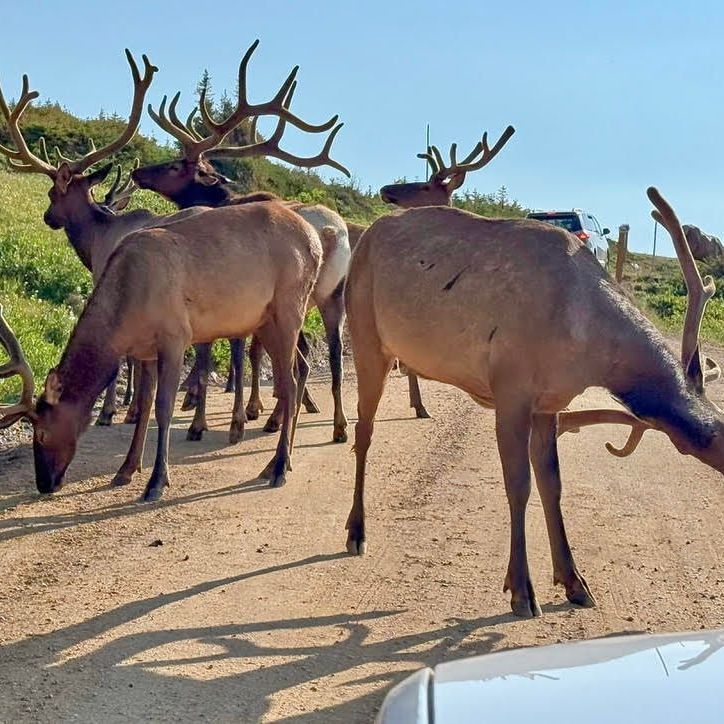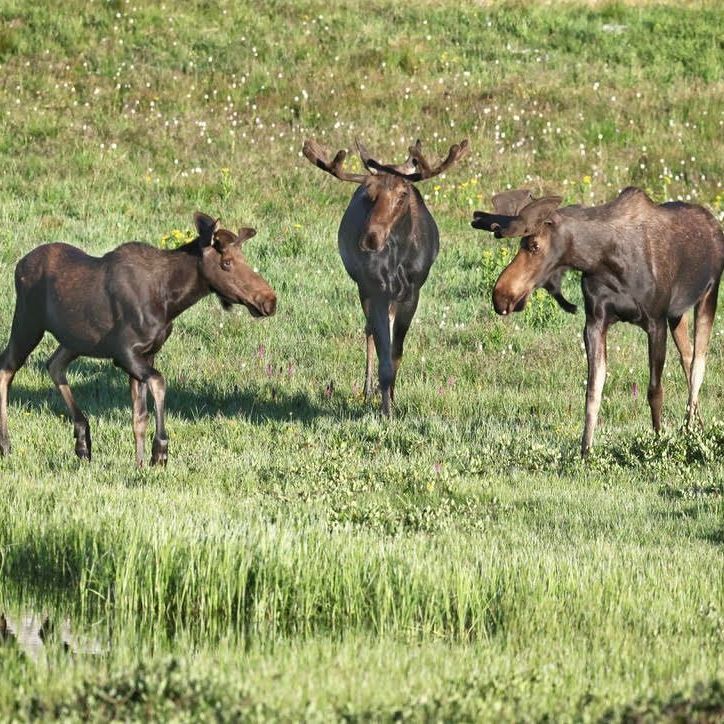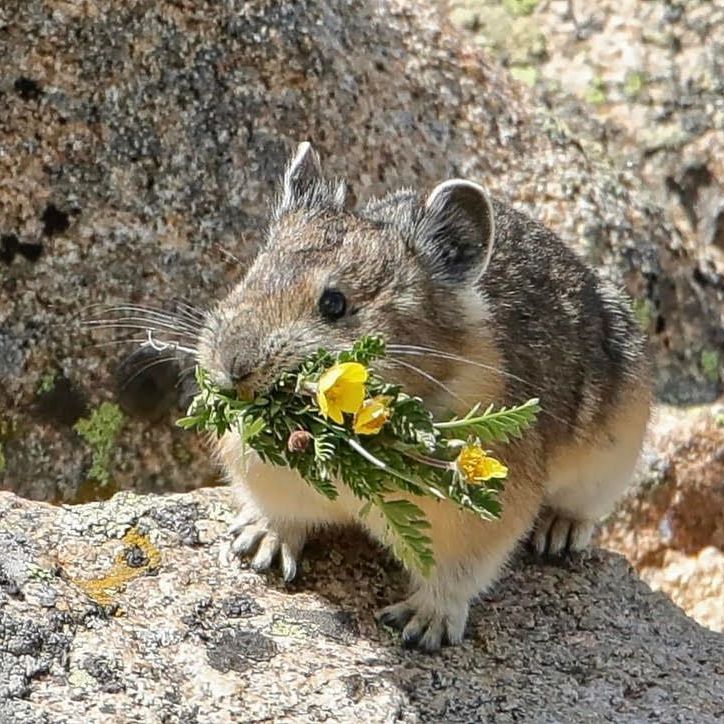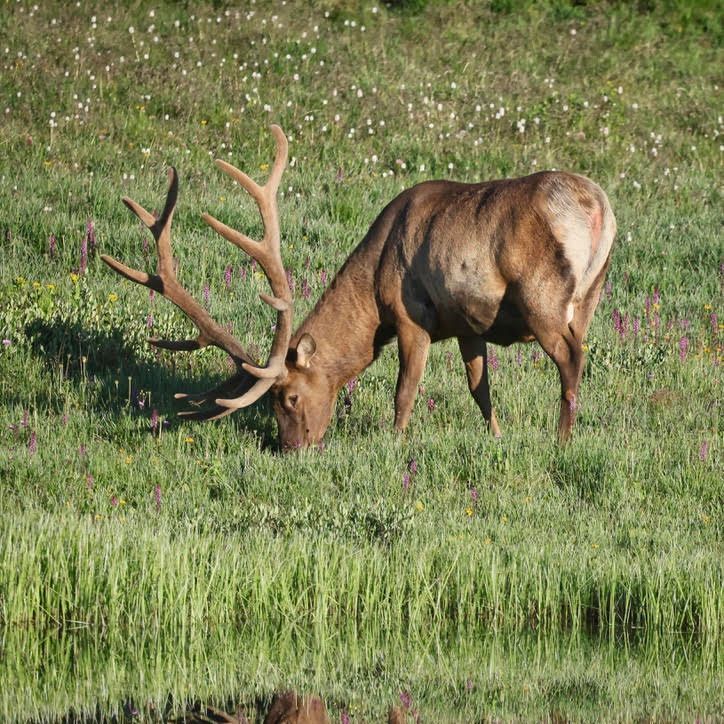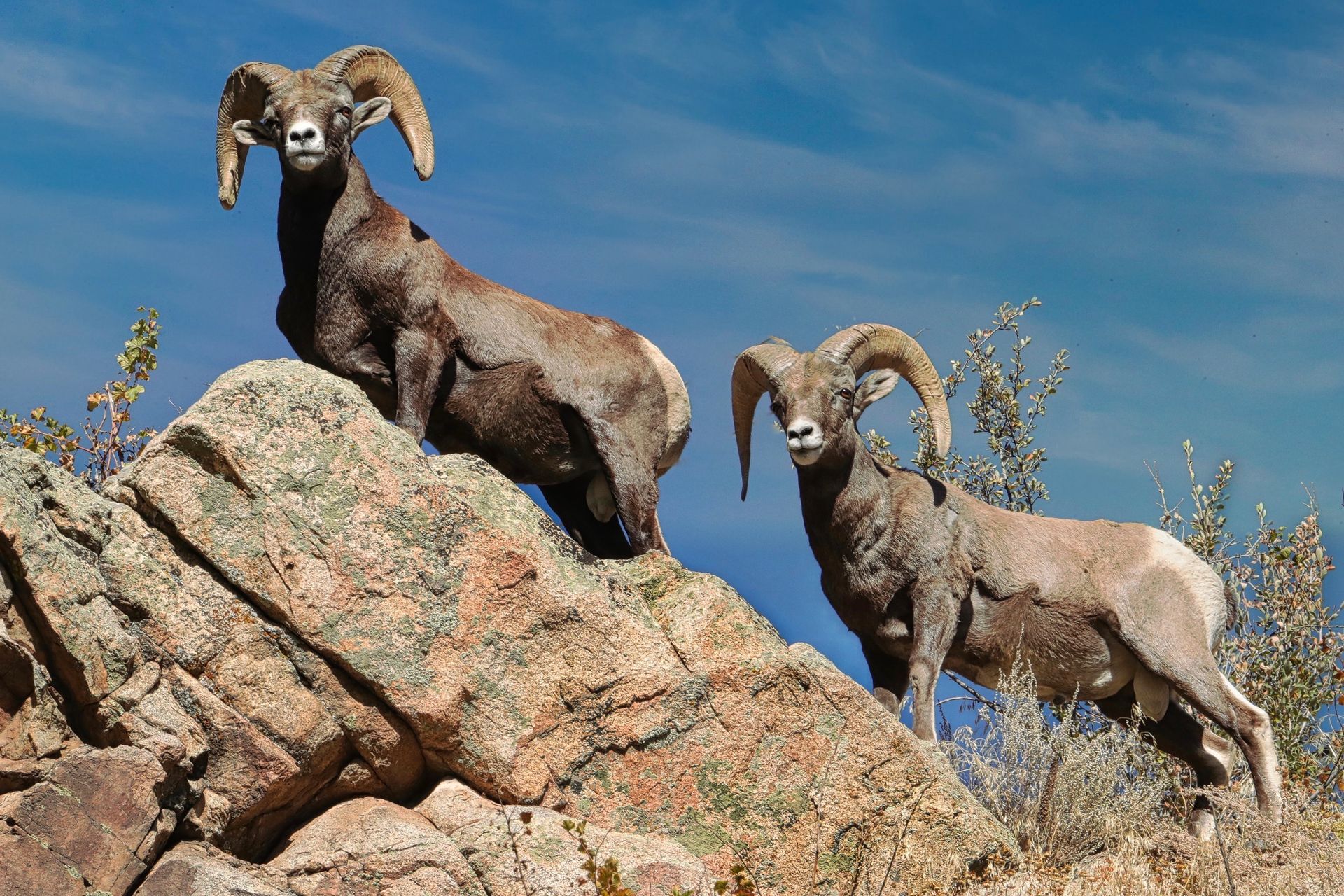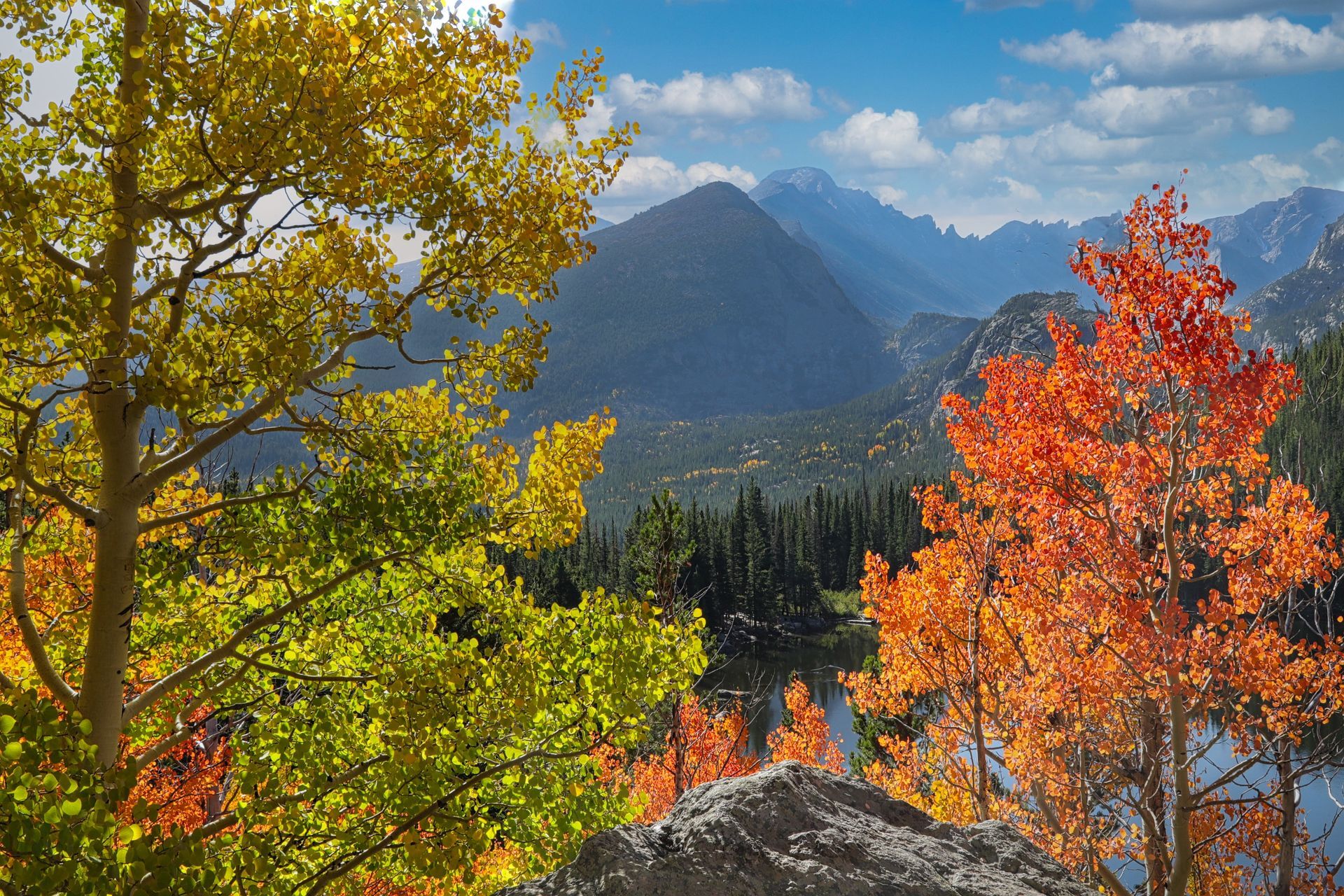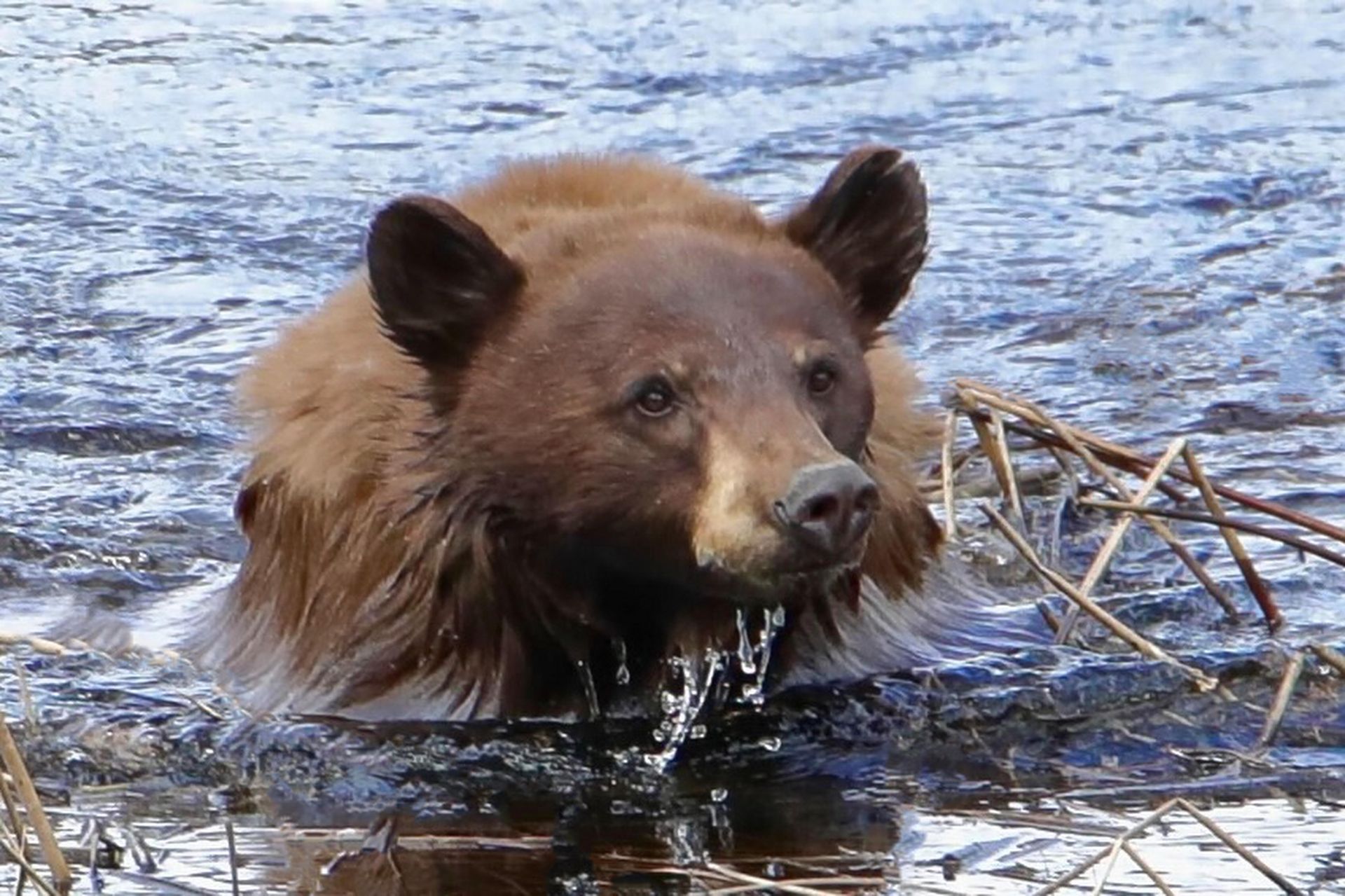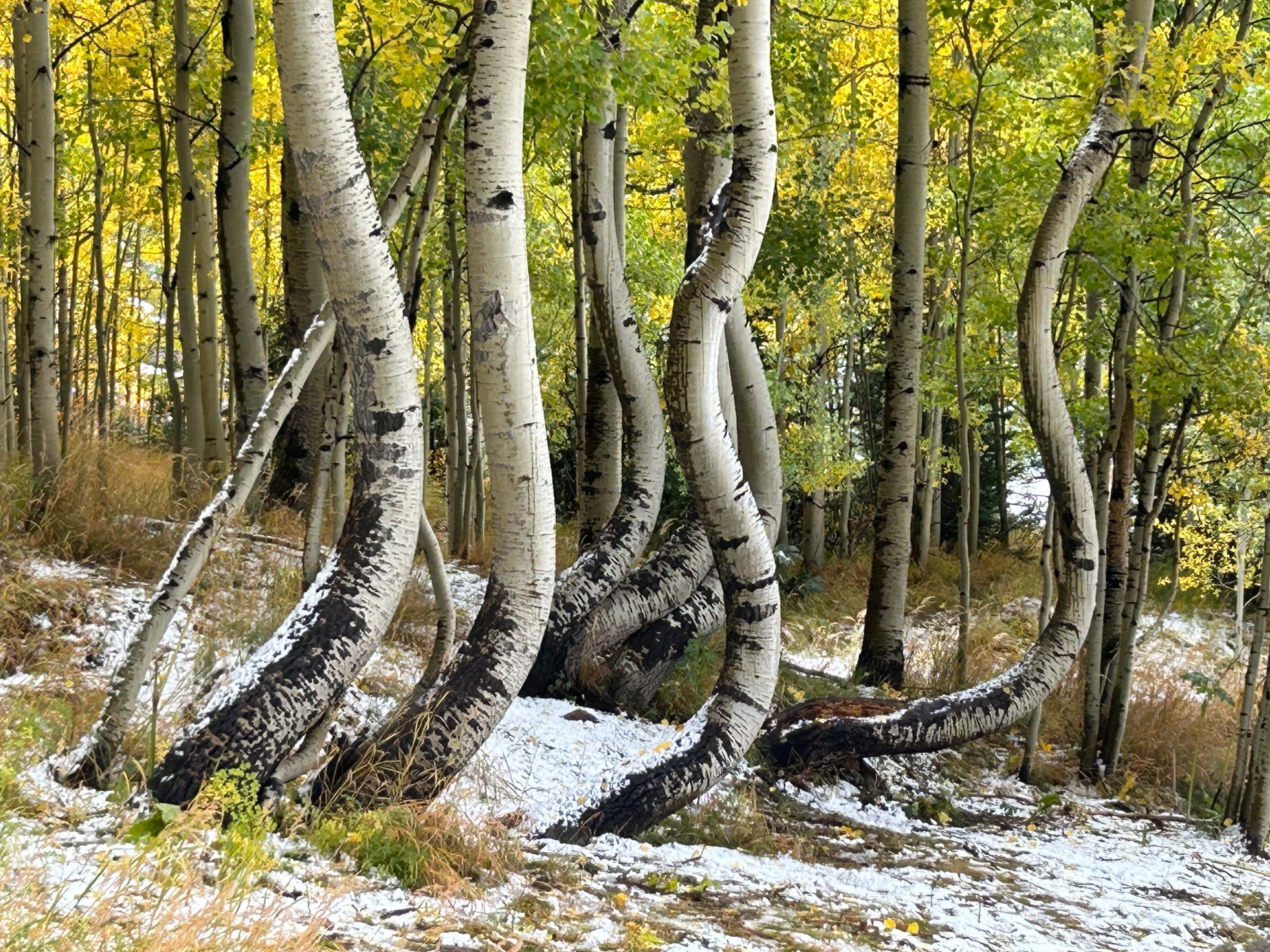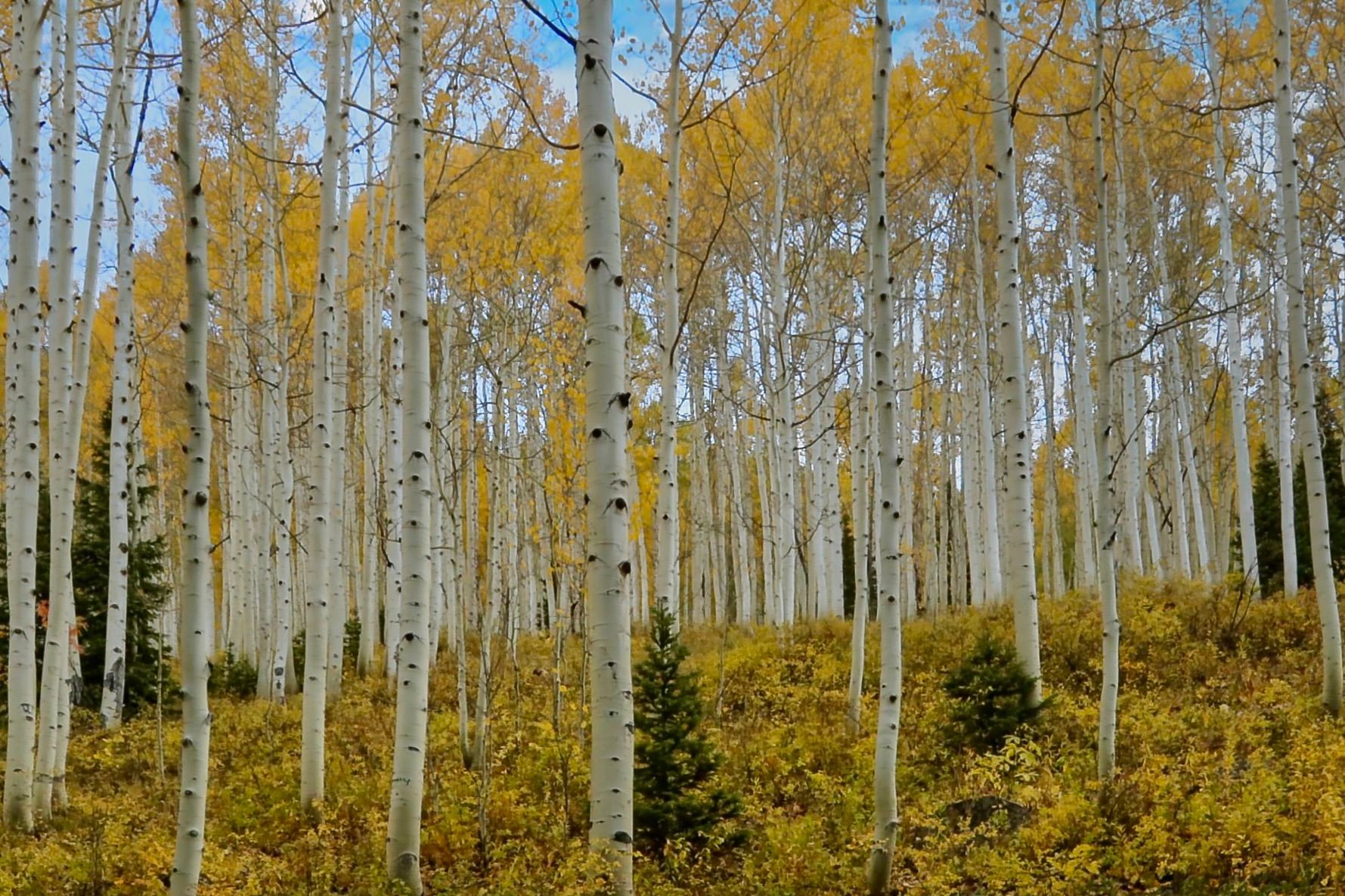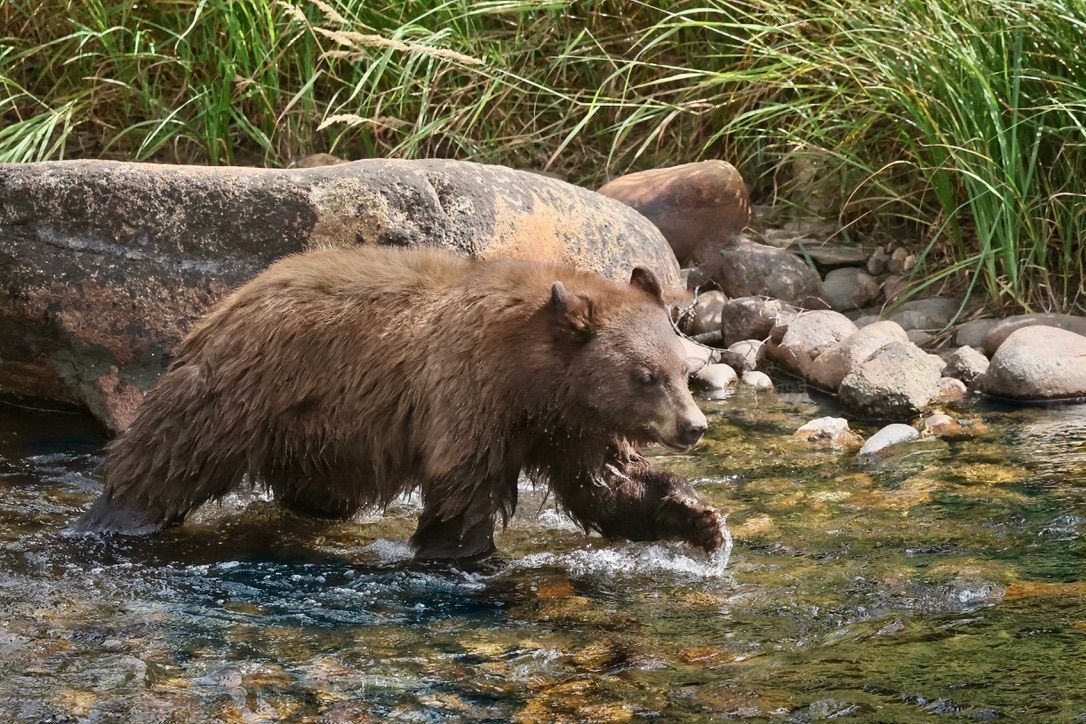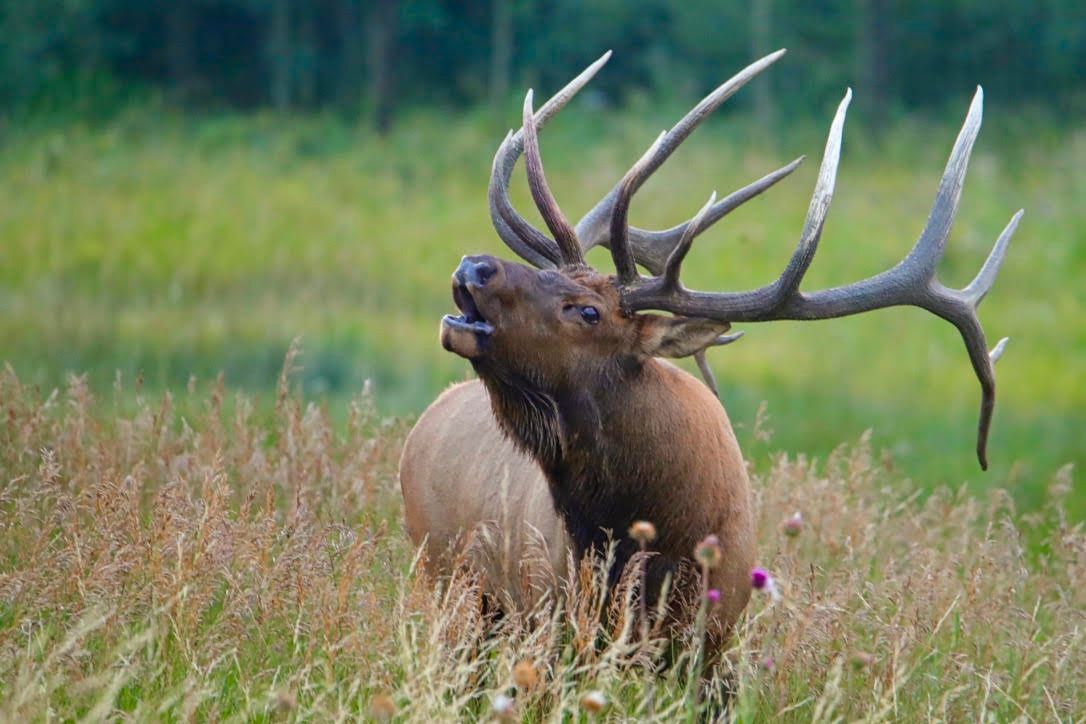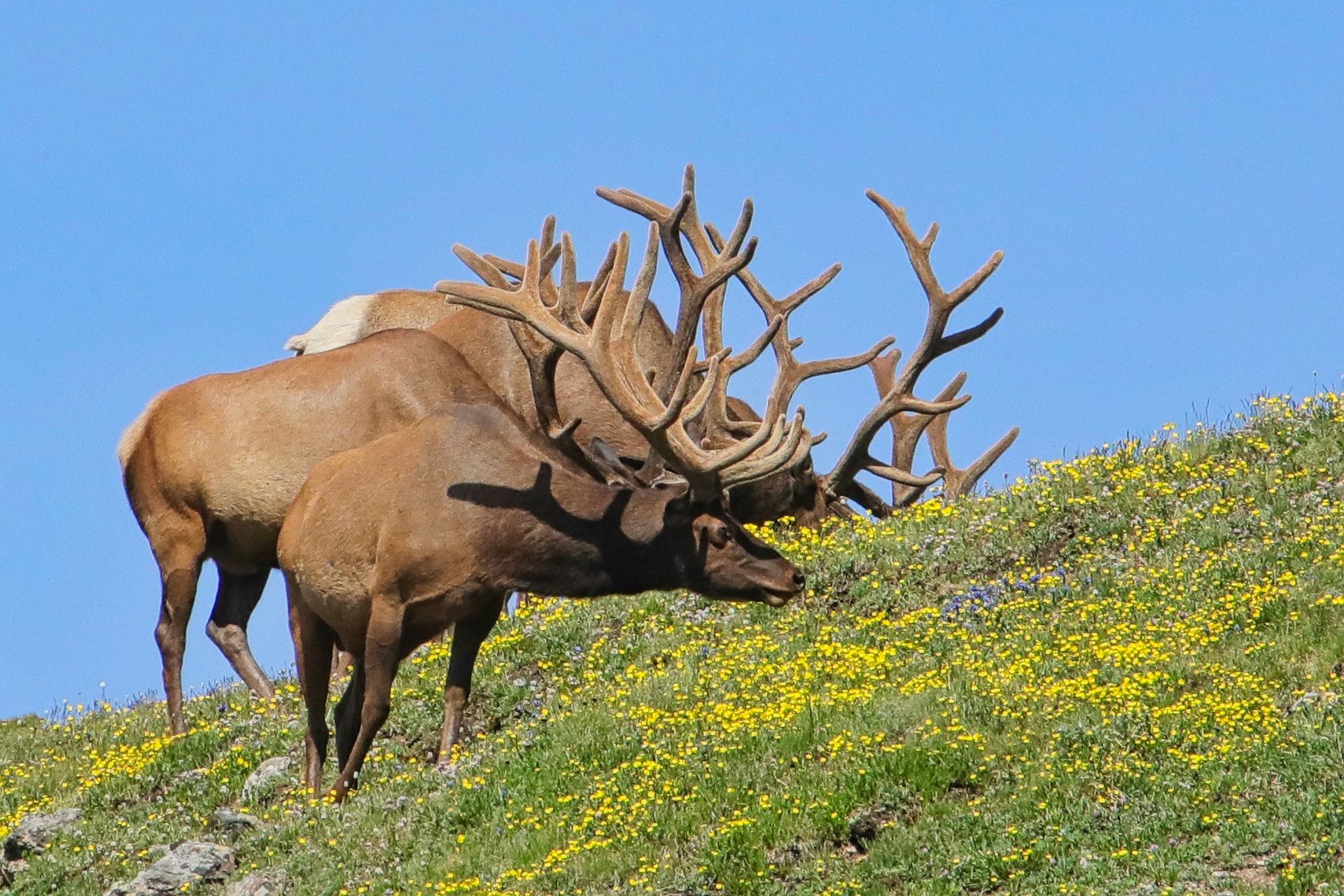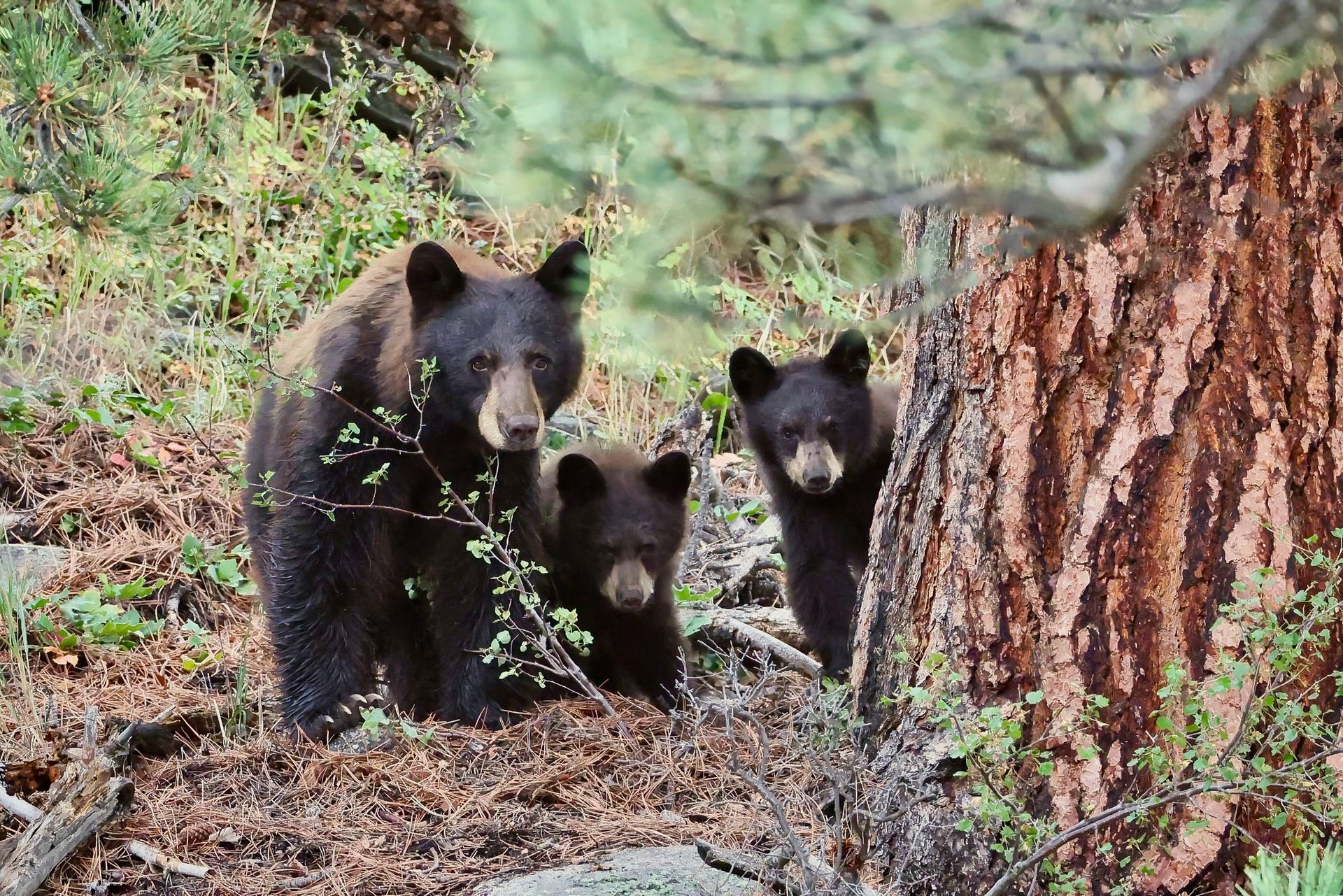The Tundra Comes Alive
The Treeless Peaks Are Green Attracting Bull Elk

As a tour operator with RMNPhotographer Tours, we are on the tundra almost every day. From the day Trail Ridge Road opens around Memorial Day to early July when the gate to Old Fall River Road is unlocked to mid-October when the snow dictates both roads close, we are above 11,500 ft.
It gives me the opportunity to watch the tundra change from brown in early June to flowers popping out later in the month when the elk are beginning to migrate up. The fun varmints - the least chipmunks, golden mantled ground squirrels, speedy pika, and families of marmots are racing across the rocky tundra.
By July, the treeless peaks have turned green attracting groups of bull elk, their antlers growing an inch a day. Cow elk have brought their calves to the mountain top to feed in the cooler elevations, and when weather warms, they can be found lying on the patches of snow for air conditioned relief.
This year, more than past years, I have seen moose crossing the barren plateaus over the continental divide. While moose cows and calves tend to stay within the protection of the forest, the bull moose have been crossing at the peaks of Rocky Mountain National Park and moving toward green pastures in State Forest State Park.
Just this week, while on a tour we stopped in a pullout to watch a herd of elk. Covering the grassy hillside, the mountains of Wyoming were far off in the distance. My excited guests were awestruck by so many elk, an animal they had never seen. The guests counted, thrilled with the spectacle. Turning in excitement, one announced, “There are 128 elk.” I can hear him returning home, telling friends of the enormous amount of wildlife they had encountered, sharing video from his cell phone.
On another morning, bull elk, hanging out at the top, lined themselves along the road nibbling the fragile grasses of the well-developed tundra soil. Our tour guests were excited by the antlered road block. The tourists, used to seeing deer back home, were captivated by the massive elk. Their faces lit up at the double layers of brown fur that provided the elk warmth. More impressive were the fuzzy antlers that would become tines like ice-picks during the rut. Capable of fighting off challengers, they were also known to poke holes in the side of a car’s metal door when the driver’s curiosity caused them to drive too close.
On one special morning, six massive elk feed on the dwarfed willows around a small glacier pond. As we photographed these dynamic animals, more dynamic moose appeared over the ridge. Three bulls, two with nice sized antlers strode around the opposite side of the pond, stopping to step into the water, their heads down as they refreshed themselves.
The moose continued to move toward us as we backed away to ensure our safety. As we did, the moose stopped on the ridge before heading down toward the opposite valley. There with the morning sunlight behind them, we captured a beautiful silhouette of the bold creatures standing on top of the world.
Exhilarated, we drove to a rocky area along Trail Ridge Road. There, to the delight of the children on the tour, pika and marmots, with an occasional ground squirrel, jumped from rock- to-rock. Their mouths were full of flowers and grasses to line their den for the winter. Entertaining and cute, they would fly across the rocky outcrops to disappear into a small hole they called home.
Then, just as we approached the treeline going down, a special treat. Along the side of the road, hopping from brush to foot high pines and into the shrubs, we watched a snowshoe hare searching for food. “He’s so much bigger than the cottontails back home,” one guest exclaimed, “and he’s got white feet.” To them, this was a special moment in the mountains.
Life on the tundra is fully alive during the green of July and August. As the brown begins to return, the animals migrate to lower, warmer elevations while the varmints seek the shelter where they will sleep much of the winter.
I get it. I love the summer in Estes Park. And during the snowy parts of the winter, wildlife photography can create the white of incredible scenery surrounding the animals. But like the animals, a migration to warmer climates is in store.
If you ever make it to Clearwater Beach, Florida in February, look me up. We’ll go out and photograph tropical birds in 80 degree weather. Maybe we'll even capture an alligator lurking in the sweltering waters so much closer to the equator.
In any event, like hibernating marmots, we’ll be warm.

